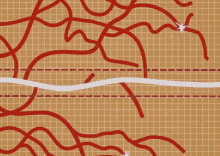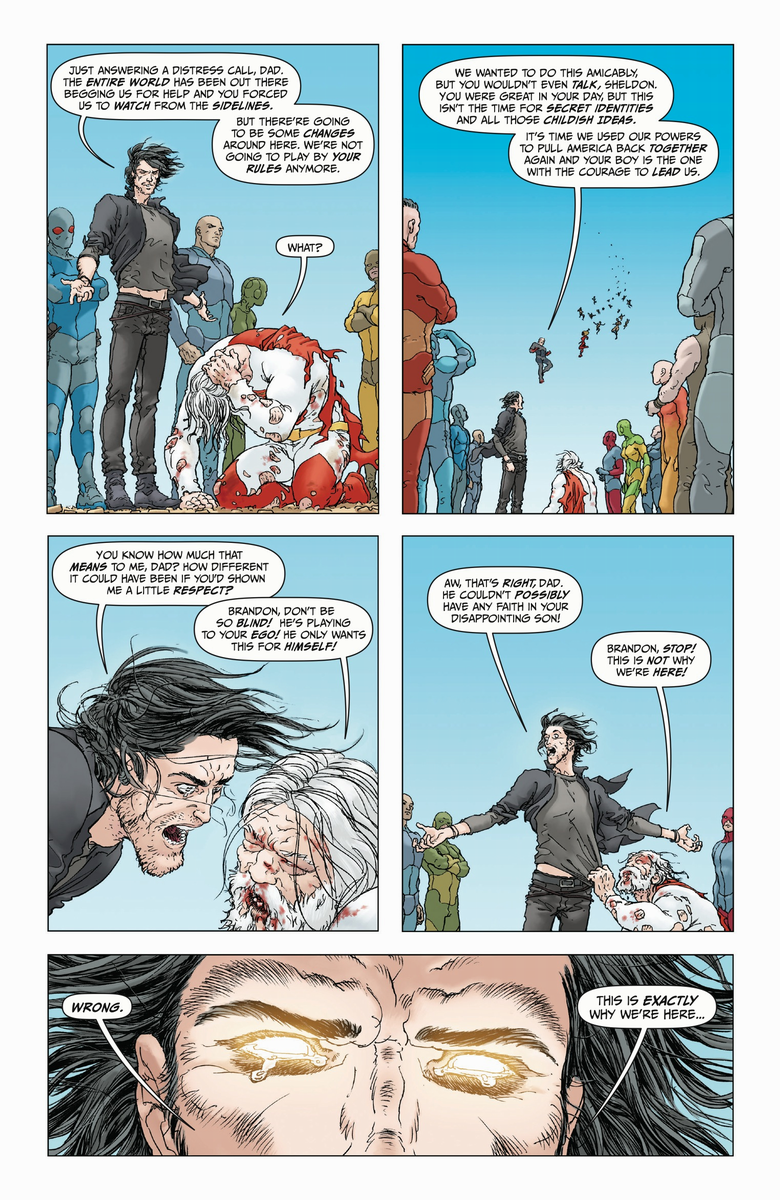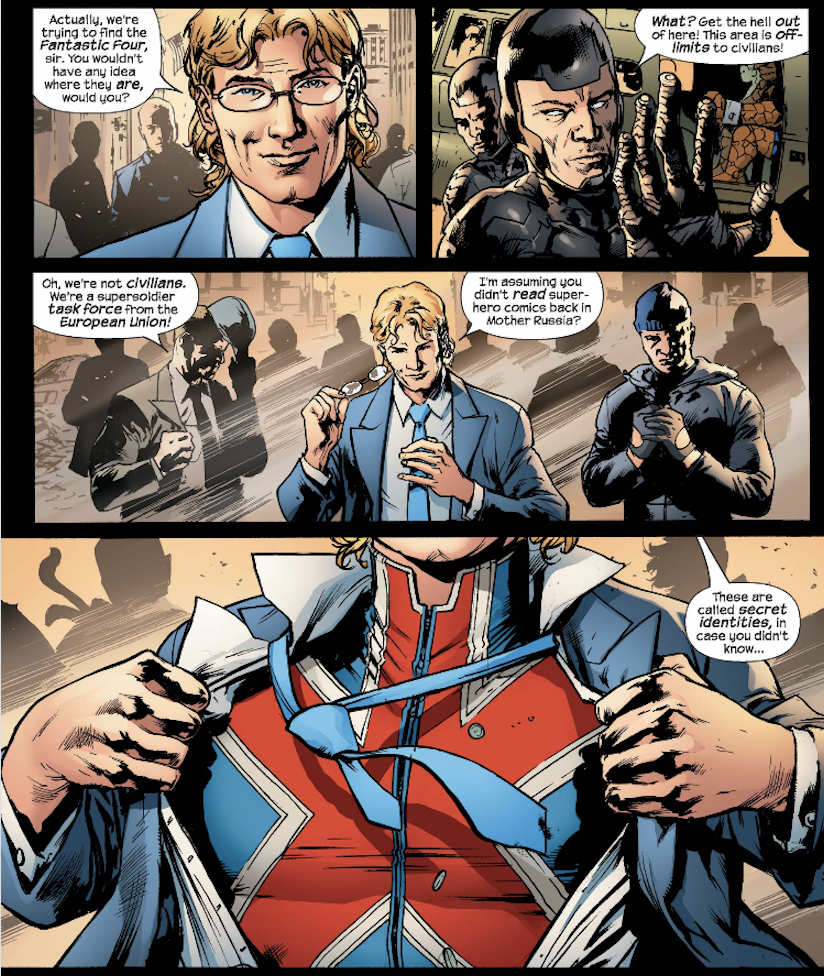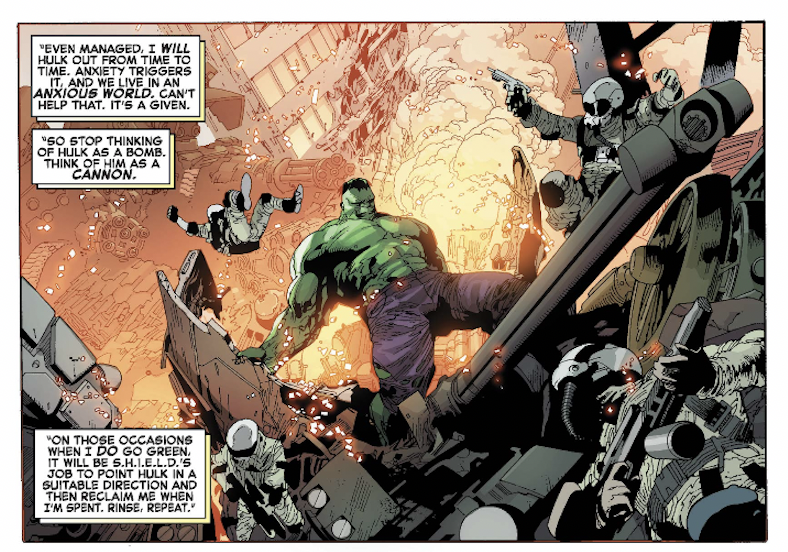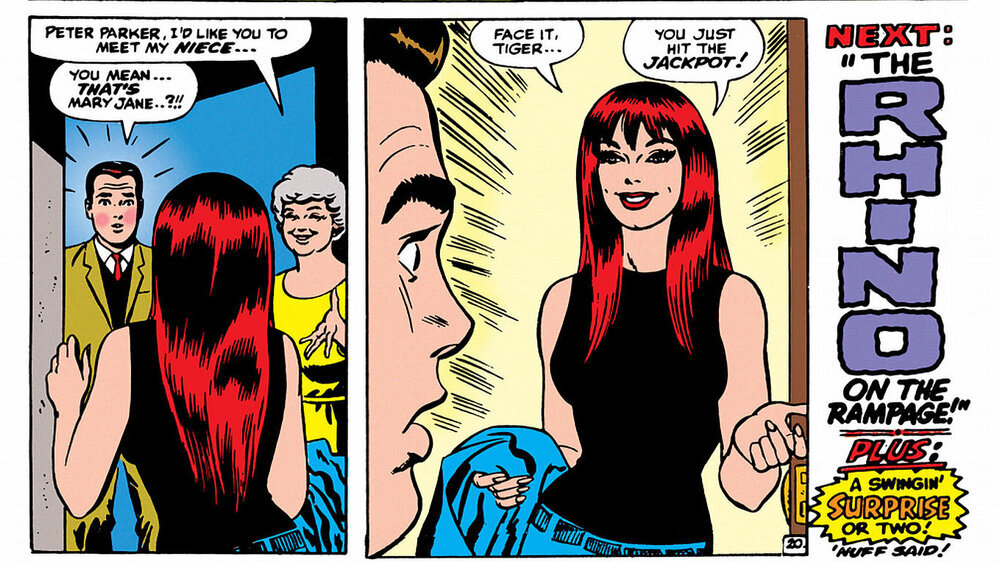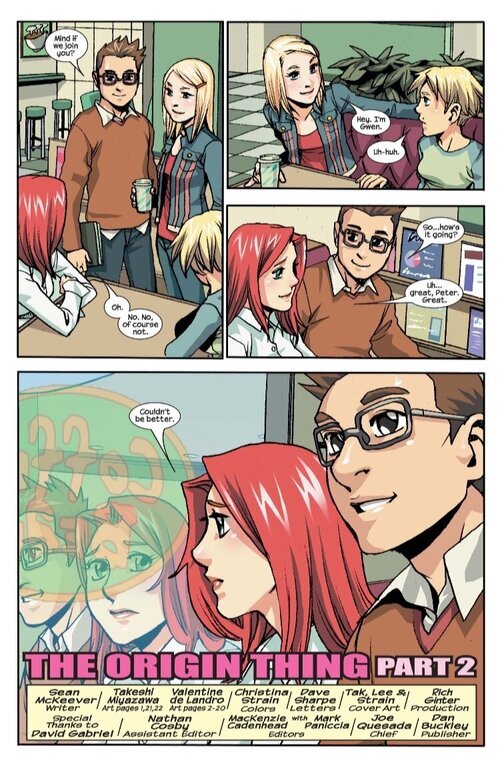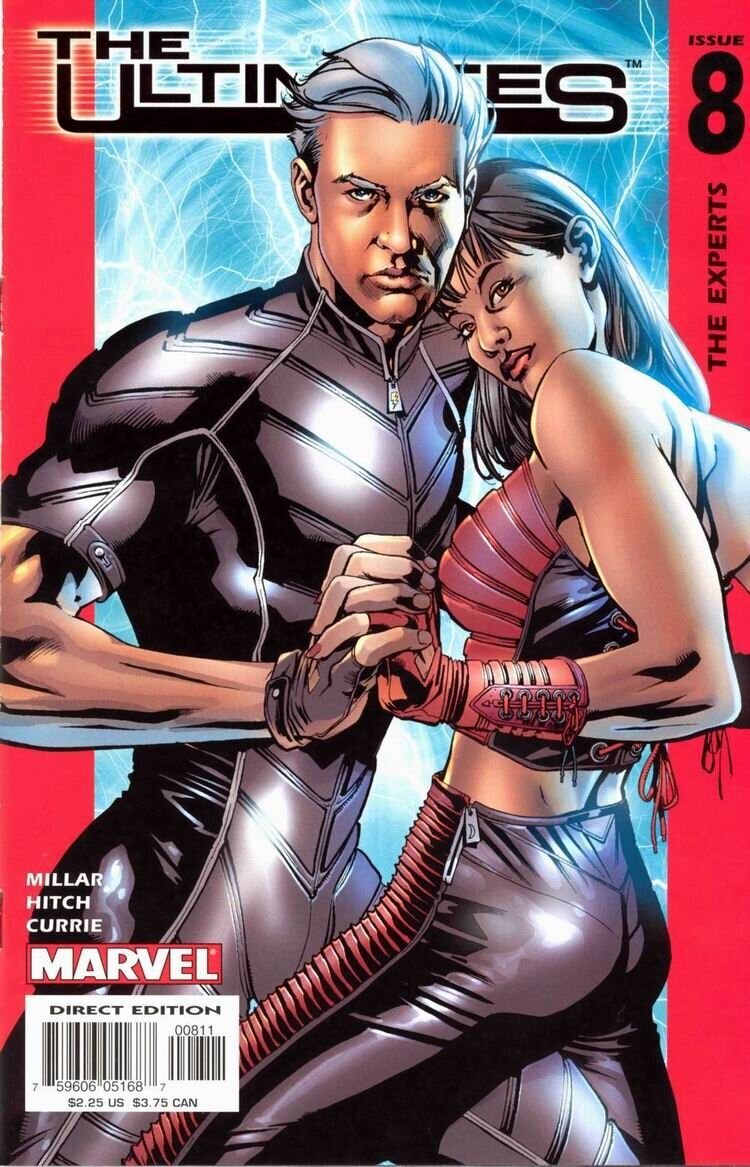Smallville: TV's Safest Risk
Smallville was a breakthrough series for nerds at the time it aired, and really for America too. Premiering October 16th, 2001, Smallville was the first dose of Superman to grace the silver screen after the September 11th terrorist attacks.
America needed a hero, and The WB (now known as The CW Freeform) gave us something a lot like one.
There had been a thousand stories about Superman before. A hundred thousand. A hundred million thousand, probably. And there were people out there who thought a character with a hundred trillion thousand stories is boring, but Smallville came around and gave us something different. The last time we saw Superman on TV was in Lois and Clark: The New Adventures of Superman (RIP 1997 Dean Cain, shame he died 20 years ago). Smallville show developers Alfred Gough and Miles Millar decided to roll the years back on the character audiences knew and show us something strange.
I miss promotional bumpers that look like this
Superman came crashing back into America’s cultural consciousness with a bit of a twist. First of all, gone is the character raised by the greatest generation. Instead, we’re treated to a version of Superman that begins during the Reagan administration. It was officially Gen X’s turn to raise a man that’s Super.
We think of the character as this perfect evolution, what people would be if their dreams came true. Hell, Grant Morrison sees Superman as a sort of God who exists in the totality of time. But the first scene of the pilot sets a wildly different tone for Superman’s origins. There were still two farmers, Jonathan and Martha Kent who couldn’t have a child but wanted one. There was still a ship that mysteriously crashed in a field and was happened upon by these humble farmers, and Clark was still brought into a loving home in America’s Bread Basket. Then, much like the turn of the century, things get complicated.
Instead of a soft landing accompanied by 10’s from Olympic dive judges, Clark’s shuttle brought a meteor shower that wreaked havoc on the entire town. The parents of Lana Lang, Clark’s famous high school crush, died in the shower. Lex Luthor and his father, Lionel, nearly died—Lex lost his curly red locks, and a man tied up like a scarecrow in the same field Lex was in died under a mountain of debris. There was kryptonite, the remains of Clark’s planet, scattered all throughout town, and that sets up pretty much every villain that we’ll see, at least in the first season.
Yeah, it feels like the Hollywood sign. And then it feels like Armageddon.
One reading is that everything’s Clark’s fault. That’s my reading, anyway. The show was weird. It took a lot of risks while playing things very, incredibly safe. Granted things are skewed in a world where talking raccoons fight cosmic nihilist titans, but the show took big swings for a time that thought Superman flying was a big risk, yet him being responsible for every terrible thing to happen to this town over twenty years like a reverse-Tom-Brady was their own brand of world-building.
Initially, Smallville focused on the pre-Superman, pre-Metropolis days—back when the Big Blue was just Clark Kent. When we meet him, his powers are starting to manifest as he goes through high school. We’re treated to a former Duke of Hazzard, John Schneider, playing Jonathan Kent, and former Supergirl herself Annette O’Toole playing Martha, rounding out Supes’ nuclear family on the now-famous farm.
Some of the stipulations of the show seem strange now. Executives demanded two things: no costume, and no flying. I don’t know how a producer has the gaul to say “Laser Vision is fine, though flight seems unrealistic”, but it was the trend at the time. The year before, Fox’s X-Men blew up the box office with a radical reimagining of how superheroes should look. Instead of bright spandex, they were sporting black leather catsuits, like roadies at a Daft Punk concert. Being heroic was d’jour. Dressing like a superhero wasn’t.
I didn’t watch the show while it was airing. I grabbed the DVD’s of the first few seasons when they went on sale, but I was 16 years old, and I pretty much put them on in the background while ripping songs off Limewire and trying to beat Halo 2 on Legendary.
It was truly a different time. And it’s a different time now, so let’s jump into what’s essentially a first viewing for the first season of a 20 year old superhero show nine years after it ended.
Can you believe this kid used to stay home on Fridays to watch superhero tv shows?
First things first: while the show doesn’t feature costumes or flying, there’s no mistaking this for anything but a Superman show. The portrayal of Clark Kent is extremely charming. We think of him as the moral compass of the DC Universe, but this show still shows him fail. He’s learning from his parents and from the circumstances around him of what it means to be good, what it means to have powers, and what it means to use those powers for good. Martha and Jonathan are well-aware of Clark’s gifts and keep him from taking advantage of them. While there’s no costume here, he’s constantly wearing jeans and flannel (when he’s not shirtless), giving him a costume of sorts. When overwhelmed by the world, he retreats to the loft above the family barn with a telescope aimed at the stars, a precursor to his Fortress of Solitude, a place where he’s allowed to be Kal-El, even if that name doesn’t mean anything to him yet.
Some of the contention about his powers comes from the fact that he’s constantly using them to help out on the farm. Lifting tractors so Jon can get underneath them, using super-speed to clean up messes. He’s using powers for his father, so why can’t he use them for himself? This becomes a central conflict as he tries to move up social strata to be more attractive to his unrequited crush, Lana Lang. It takes something that we understand as a given about the character but puts it into a context the demographic can easily wrap their head around. “If I can use my powers on chores, why can’t I use them to join the football team? I could be the best running back in history”, and yeah, he’s got something of a point. Believe it or not, this show grounds the character down to something relatable by showing the Big Blue Boy Scout still getting his bearings.
The symbolism we associate with the character doesn’t stop there. The first episode in particular beats you over the head with it in two ways. The first is after Jon told Clark not to use his powers. But Lex Luthor, demoted by his father Lionel (maybe one of Smallville’s greatest contributions to the Superman mythos), is back in Smallville, and still acting like the carefree socialite that got him kicked out of Metropolis to begin with. Speeding down the road in his sports car, he fails to see a downtrodden Clark Kent at the last second, and crashes into him, careening off a bridge to the river down below. Clark, against his father’s instructions, jumps down to save him, rescuing him from certain death. instead of making a clean escape with his powers and no witnesses, Clark decides to use his strength for good to save the person who would become his greatest enemy. He stops being Clark Kent in that river, and is baptized into something greater, something Super.
The second symbolic image the pilot beats you over the head with, is the image probably most associated with the show. Lana’s boyfriend Whitney, wearing Lana’s necklace made from Kryptonite, and other members of the football team jump Clark because of his obvious feelings for Lana. They tie him up like a scarecrow, identical to the man from the beginning of the episode, and put Lana’s necklace around him, rendering him completely helpless. He’s got the logo for their school, a red ’S’ drawn across his chest as he hangs there, crucified for his sins of being something else, punished for trying to be a hero earlier in the episode. And of all people, who rescues him? Lex freakin’ Luthor.
Well, we know the S on his chest doesn’t stand for Subtle.
Let’s talk about him for a second.
Lex is a weird dude in this show and I love it. Everyone else is supposed to be in high school, but Lex is constantly involved in their lives, despite being in his mid-to-late 20’s. For every guilty pleasure high-school plot line that Clark, his friends Pete and Chloe, his love interest Lana, and other students from his school are thrown up against, the “high-stakes” intrigue of Lex’s big city problems are always coming home to roost. Clark brings the drama, but Lex brings the soap opera, and both spheres intersect in a way that is admittedly strange, but ultimately satisfying. I started calling him Deus Lex Machina for the amount of problems he comes in to solve but in reality, his journey mirrors Clark’s. As Clark tries to learn the ropes of being a good person who does the right thing, Lex is constantly fighting to be a good person even though it would be so easy for him to not be. He’s technically as perfect as Clark is, but no one trusts him, even though they’re both outsiders trying to operate in Smallville’s best interests. Lex is the bomb’s counter you see going down, but in a language you can’t understand; you know he’s going to go off, you just have no idea when. The tragedy is seeing flashes of who he could be when you know what he becomes. Only one season in and it’s one of my favorite portrayals of the character.
We know, man.
Smallville dove headlong into the trope that became known as “Freak of the Week”. Each episode saw a different person, usually a classmate of Clark’s, gain powers from the kryptonite remains Clark brought with him in the meteor shower. The radiation would warp their most fatal flaw and give them a gift related to it. The hot-headed coach would get actual firepowers, the coolest kid in school would get actual ice powers and so forth.
There’s any irony here that’s rarely touched upon though - a majority of these incidents are borne from Clark’s arrival, and while it usually falls to Clark to bear responsibility and stop these villains, there’s the occasional hint of this being his penance. Just when things are progressing in his relationships, he has to pull out and go make up for the consequence of his arrival. He’s simultaneously Pandora who opened this box of Monsters on the world and the Hope at the bottom of it. Constantly giving up the advancement of his own life for the sake of others…. man they really just made a christian show where Jesus had superpowers, didn’t they? But they never do anything to build that. They literally just have a monster worth being fought or outsmarted, and then everyone’s back at the table in time for supper. Besides Lex, who has an agenda but isn’t outright villainous in the first few seasons, the most remarkable thing about Clark’s rogues gallery is how unremarkable it is.
Aside from a few standout guest stars (like a young Amy Adams, Adam Brody, and Lizzy Caplan), they were entertaining, but largely forgettable. Except for two episodes. Two amazing episodes that really brought power to the premise.
The first episode was Leech, where Shawn Ashmore plays a social outcast that’s being made fun of on a school field trip to the local power plant. So unhappy with his life, he tries to kill himself during the trip while holding onto a meteor fragment, only to be saved by Clark. A freak electrical storm causes Clark’s powers to be transferred into him, leaving Clark completely powerless. He uses his powers for social gain and is finally accepted by his peers at school, but the first time he’s told no, he snaps, and we see who Clark would be if he were raised by anyone other than the Kents. He acts the way Clark has always wanted to and the entire town fears him; everyone except Clark, who tries to stop him and get his powers back. For the first time, Clark has a normal life, and he’s unburdened by a lack of powers, but not by a lack of morality. He tries to do the right thing, even if it will kill him.
The second episode is called Stray, and focuses on an orphan named Ryan, who’s been running with two surrogate criminals against his will. Ryan has surface-level telepathy, he can read people’s immediate thoughts and his two ‘parents’ have been using his ability to pull grifts. One night he escapes from them and is nearly killed by Martha as she’s driving home. She brings him back to the farm and for the first time ever, he feels like he has a family. Ryan is the first person we meet on the show who doesn’t get powers from the meteor storm. Like Clark, he’s born with them. Besides Clark’s general good nature, I think this explains why he took to him like a brother so quickly. For once, someone was gifted like Clark, but there was no guilt about it. Clark, Martha, and Jon are allowed to enjoy being with someone who wants to be as anonymous as they do.
While Smallville doesn’t rep the nascent aughts as much as I thought it would, it makes sense. Smallville is not just a fictional place, it’s a fictional concept. Time works differently here, so instead of it feeling like the 2000’s, it feels equal parts 2001, 1995, 1979, and 1961, making it dated and evergreen at the same time, a wonderfully weird touch for a wonderfully weird show.
I regret not watching the show as it aired but honestly I don’t think I could’ve appreciated it then as I do now. I’m sure the show changed wildly by the final season (I’m only up to season 3 so far), but the fact that it existed at the same time as Sam Raimi’s 2002 Spider-Man, Chris Nolan’s 2008 The Dark Knight, and ended the same year as 2011’s Thor, Captain America, Green Lantern, and X-Men: First Class means that it was there through the boom, bust, and second wind of superhero cinema. Like it or not, these mythic figures are a fixture of the modern film industry and a pillar of the CW’s (and really every network/streaming services) current programming block. As every show tries to be realistic and gritty, steeped in pain and pathos, Smallville takes the character in stride and delivered to audiences a hero when they needed one most, with camp, charm, and its own specific brand of sadness.












